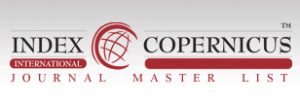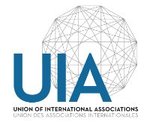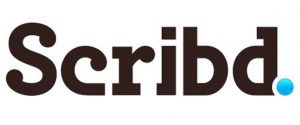Science and Education a New Dimension
Iss. 238. 2020.
L. O. Chyzhevska Functional and planning organization of peasant farmsteads
https://doi.org/10.31174/SEND-NT2020-238VIII29-01
Abstract. It is proved that the socio-economic significance of the rural recreation development and tourism to create an additional agricultural tourist type and recreational business activities and to increase the rural families employment members. The peasant farms functional-planning organization is considered which provides services for rural green tourism. The functional zoning and structural composition of different local farms elements types extended and farm hospitality are determined, as well as planning con- nections between them are outlined. Proposals to the domestic regulatory framework of design are given.
Keywords: Green rural tourism, peasant households’ models, local, full, farm and farmsteads expanded hospitality.
L. O. Chyzhevska Functional and planning organization of peasant farmsteads
O. V. Romashko-Maistruk Fundamentals of the energy model of reinforced concrete elements and structures deformation
https://doi.org/10.31174/SEND-NT2020-238VIII29-02
Abstract. This article presents a critical analysis of existing models of reinforced concrete elements and structures deformation. The most important requirements to the model which could claim a generalized role are formed. The most important provisions of such a model have been developed. It is based on the deformation-force model of reinforced concrete resistance to force and the hypothesis of invariance in units of volume and potential energy independence of reinforced concrete element deformation from the loading mode. At the same time, this hypothesis is presented as an energy criterion for depletion of reinforced concrete elements bearing strength, which allows to calculate the total and residual resources of these elements during their long operation.
Keywords: reinforced concrete elements, deformation model, state diagram, curvature, energy resource.
O. V. Romashko-Maistruk Fundamentals of the energy model of reinforced concrete elements and structures deformation
V. Karpiuk, I. Karpiuk, A. Tselikova, A. Khudobych Calculating model of the bearing ability of the substructed areas of baltic basalt concrete structures
https://doi.org/10.31174/SEND-NT2020-238VIII29-03
Abstract. Non-metallic composite reinforcement (NKA) is increasingly used in modern construction, due to its characteristics such as high strength, resistance to chemical and physical corrosion, low weight and low thermal conductivity, it is increasingly replacing steel reinforcement. The wider use of NKA for reinforcing concrete structures is constrained by insufficient knowledge of the features of their work and limited regulatory support. The regulatory documents of different countries of the world were studied to calculate the bearing capacity of inclined sections of conventional single-span concrete beams reinforced with both steel and basalt- plastic reinforcement (BFRP). A comparative analysis of the actual bearing capacity of inclined sections of reinforced concrete beams and basalt-concrete experimental beams with similar structural factors is applied. A comparative analysis of the actual bearing capacity of inclined sections of basalt concrete beams reinforced with BFRP, and its calculated values calculated according to the recommendations of existing design standards of foreign countries, showed their unsatisfactory convergence. Basically, foreign standards underestimate up to several times the real bearing capacity of research beams reinforced with both steel and basalt reinforcement.
Keywords: basalt-plastic and steel reinforcement, bearing capacity, deformability, crack resistance, static and low-cycle loads.
V. Karpiuk, I. Karpiuk, A. Tselikova, A. Khudobych Calculating model of the bearing ability of the substructed areas of baltic basalt concrete structures
V. O. Yathenko, T. M. Korotkova The spatial planning as instrument of management development of the in-plant systems of settlement is in Ukraine
https://doi.org/10.31174/SEND-NT2020-238VIII29-04
In the article research of features of the town-planning going is continued near development of suggestions of spatial development of the inplant systems of settlement in Ukraine within the limits of the incorporated territorial communities. It is offered to one of instruments of management these systems spatial planning that will give an opportunity to create the model of intersystem resource combination and control system of local horizontal and state vertical line in end-point.
Keywords: spatial planning, system of settlement, decentralization, in-plant system of settlement, territorial society, general chart, resource potential.
V. O. Yathenko, T. M. Korotkova The spatial planning as instrument of management development of the in-plant systems of settlement is in Ukraine
N. V. Lada, R. V. Breus, S. V. Lada Generation of models of direct and inverse two-bit two-operand operations of strict stable cryptographic coding
https://doi.org/10.31174/SEND-NT2020-238VIII29-05
Abstract. The article shows and proves that the identical transformation of the second operand of cryptocurrency operations modifies the direct operation and synthesizes the inverse operation to the modified one. Random selection of single-operand operations to convert the second operand of a two-operand operation provides a random modification of crypto-conversion operations. Thus, it was possible to simul- taneously generate models of direct and inverse two-bit two-operand operations of strict stable coding to increase the stability and reliability of streaming encryption.
Keywords: computer cryptography, cryptographic coding; strict stable cryptographic coding; synthesis of operations; variability of cryptoalgorithms.
N. V. Lada, R. V. Breus, S. V. Lada Generation of models of direct and inverse two-bit two-operand operations of strict stable cryptographic coding
V. Y. Sokol, M. О. Bilova, V. О. Krykun An Approach To Project Team Formation Using Task Management System
https://doi.org/10.31174/SEND-NT2020-238VIII29-06
Abstract. The research focuses on the analysis of project team formation specifics in IT companies. It overviews main characteristics of task management systems (TMS) and identifies the place of project team formation process during project planning. The article addresses issues of creating project schedule taking into account project team members availability. It proposes an algorithm of members selection, including adaptation to the problem of determining possible performers of tasks.
Keywords: task management system, software development team, team formation, IT company.
V. Y. Sokol, M. О. Bilova, V. О. Krykun An Approach To Project Team Formation Using Task Management System
L. R. Mateshuk-Vatseba, A. V. Zinko, I. V. Vilkhova, N. I. Hresko, A. M. Bekesevych Qualitative-quantitative changes in the parts of hemomicrocirculatory bloodstream of white matter of the white rat’s telencephalon as a result of exposure to nalbuphine during 4 weeks in the experiment
https://doi.org/10.31174/SEND-NT2020-238VIII29-07
Abstract. The aim of our study was to establish qualitive-quantative changes in the parts of hemomicrocirculatory bloodstream of the white matter of white rat’s telencephalon after 4 weeks of nalbuphine injections, because the development of angiopathies is among the most common manifestations of drug use. There was found loss of a clear sequence of parts of hemomicrocirculatory bed, partial destruction of the capillary component, dilation of vessels, formation of perivascular sockets due to paravasal edema, thickening of the wall of the arterioles, formation of parietal thrombi in microvessels.
Keywords: corpus callosum, angioarchitecture, nalbuphine, experiment.
L. R. Mateshuk-Vatseba, A. V. Zinko, I. V. Vilkhova, N. I. Hresko, A. M. Bekesevych Qualitative-quantitative changes in the parts of hemomicrocirculatory bloodstream of white matter of the white rat’s telencephalon as a result of exposure to nalbuphine during 4 weeks in the experiment
H. M. Stepanova, V. M. Shaposhnikova, M. Yu. Stepanov Experience in combating the COVID-19 pandemic in Cherkasy region (Ukraine)
https://doi.org/10.31174/SEND-NT2020-238VIII29-08
Abstract. The article examines the experience of the authorities and the health care system of Cherkasy region (Ukraine) in combating the COVID-19 pandemic as of July 2020, shows the objective and subjective reasons for the moderation of the disease and the control of the epidemic situation in the region. An attempt was made to predict the development of the situation in Cherkasy region in the coming months.
Keywords: COVID-19, coronavirus disease, Cherkasy region, health care system, hospitals.
H. M. Stepanova, V. M. Shaposhnikova, M. Yu. Stepanov Experience in combating the COVID-19 pandemic in Cherkasy region (Ukraine)
O. Mitsa, N. Barkats, E. Zadorozhniy, R. Melnyk, M. Sychov Modeling of influence of inhomogeneities on spectral characteristics at creation of enlightening filters
https://doi.org/10.31174/SEND-NT2020-238VIII29-09
The influence of slightly inhomogeneous high refractive film’s index on basic characteristics of wide band interference filter at different wavelength was investigated. The stability of the spectral characteristics of a broadband filter of the S-2BH2B… 2BH2B type with respect to insignificant changes in the parameters of the layers by the Monte Carlo method was also investigated.
Keywords: slightly inhomogeneous films, light transmission, multilayer interference coating, the wideband interference filters, Monte Carlo method.
O. Mitsa, N. Barkats, E. Zadorozhniy, R. Melnyk, M. Sychov Modeling of influence of inhomogeneities on spectral characteristics at creation of enlightening filters
O. O. Bakulich, I. R. Kis Green environmental risk management in the projects of transport enterprises using foresight methods
https://doi.org/10.31174/SEND-NT2020-238VIII29-10
Abstract. The article is devoted to the study of green environmental risk management in the projects of transport enterprises using foresight methodology as an element of strategic management. The features of green risk management introduction in projects of transport enterprises are considered. The necessity of risk management concepts in projects is determined (taking into account current trends in the greening of economic activity of industrial enterprises). The implementation of proactive risk management as a green is proposed. It involves a forecasting of their characteristics and a forming of a strategic program, which provides for the development of measures not only to protect the environment from their impact, but also to prevent their occurrence. There are two main models in green business: incentive models and life cycle models. Incentive models include functional systems for selling or servicing goods, and design, construction, finance, operation, etc. Also incentive models may contain performance-based models that can have environmental effects, implemented as energy saving companies, water conservation companies, material saving companies and chemical management systems. Life cycle models include take-back system, Green Supply Chain (GSC) and industrial symbiosis. A lot of business organizations use different types of green business models and innovations to support the overall green business model. Thus, their green business model innovations intersect and reinforce each other, based on business approaches aimed at the renewable value of materials. Under the Kyoto Protocol, there is a mechanism called the Clean Development Mechanism. A business organization in a developing country has to implement an emission reduction project that aims to achieve the goals of the Kyoto Protocol to promote environmental sustainable development.
Green business management methods are often characterized by the following statements:
1. They include environmental criteria in all main business decisions;
2. They supply environmentally friendly goods or services, whenever possible;
3. Business is clearly concerned about the impact on the environment;
4. Business is committed to the long-term application of environmental criteria in its daily activity. An important aspect is the addition of the «3R» principle in the practice of doing business. The Three R’s – (reduced, reuse, and recycle) principle involves the reduction, reuse and disposal of waste.
Keywords: risks; environmental risks; risk management; project; transport enterprises.
O. O. Bakulich, I. R. Kis Green environmental risk management in the projects of transport enterprises using foresight methods
S. S. Gomon Mathematical model for determining the ultimate deformations of solid wood of deciduous and coniferous species
https://doi.org/10.31174/SEND-NT2020-238VIII29-11
Abstract. A detailed analysis of literary sources of foreign and domestic scientists on this topic was conducted. The method of de- termining the ultimate deformations of solid wood of deciduous and coniferous species is presented. It is established that the ultimate deformations of deciduous (birch, alder, ash) and coniferous (larch, pine, spruce) species by compression along the fibers correspond to the deformations at the maximum moment of the bending element of rectangular cross section. A method for establishing the boundary deformations of solid wood using “moment – curvature” diagrams of bending elements of rectangular cross section. A sequence and block-diagram for determining the ultimate compressive deformations of wood along the fibers have been developed. The coefficients of the polynomial W1, W2, W3, W4 for all studied wood species are determined. The “moment-curvature” and “moment-deformation” diagrams for wooden beams of rectangular cross-section are constructed. For the first time, numerical values of limiting deformations of birch, alder, ash, larch, pine, and spruce wood were obtained.
Keywords: solid wood, moment, curvature, ultimate deformations, «moment-curvature» diagram.
S. S. Gomon Mathematical model for determining the ultimate deformations of solid wood of deciduous and coniferous species
K. Kamieniev Input data preparation for the Master Bay Plan problem solution
https://doi.org/10.31174/SEND-NT2020-238VIII29-12
Abstract. The preparation of a cargo plan for container vessels requires the record of many parameters. The record of restrictions for container vessels is possible when using Boolean models of integer programming. To solve Master Bay Plan problem it is necessary to prepare the input data. The coefficient matrix forming method for the restrictions of the optimization problem under consideration is proposed. A modified Dijkstra’s algorithm is used to reduce inequalities to postfix notation at the first stage. A matrix of coefficients is formed at the second stage. The example of the inequality analysis for the model and the vessel is given, and the result that has been obtained using the proposed method is shown.
Keywords: automated stowage planning, Master Bay Plan problem, Boolean mathematical model, input data preparation, postfix notation.
K. Kamieniev Input data preparation for the Master Bay Plan problem solution
N. D. Orlova Refinement of the calculation of the parameters of the kinetics of grinding plant raw materials in a vibration mill (based on mathematical models)
https://doi.org/10.31174/SEND-NT2020-238VIII29-13
Abstract. The process of destruction of plant raw materials is considered from the point of view of the evolution of the interfaces of individual structural elements with the further development of cracks on these surfaces. The emergence and development of cracks is considered from the point of view of fractal geometry as the formation of a fractional-dimensional layer. The article proposes formulas for calculating the specific energy saturation of the dispersed system and the specific surface of soil material using the representations of fractal geometry.
Keywords: grinding of vegetal raw materials, specific energy saturation, specific surface area, fractal dimension.
N. D. Orlova Refinement of the calculation of the parameters of the kinetics of grinding plant raw materials in a vibration mill (based on mathematical models)
I. L. Surinov The way to improve the accuracy of control of maneuvering of the vessel by assessing the abscissa of the center of gravity
https://doi.org/10.31174/SEND-NT2020-238VIII29-14
Abstract. This article presents an algorithm that allows to quickly determine the center of gravity of a vessel. When considering maneuvering control issues, the vessel is considered as a point, the mass of which is concentrated at the center of gravity. The origin of coordinates is placed at the point of intersection of the diametric plane and the mid-frame. The error in determining the location is commensurate with the value of the abscissa of the center of gravity, and sometimes much less. Accurate determination of the coordinates of the center of gravity will reduce the error when finding the ship’s position.
Keywords: abscissa of centre of gravity, static moment of displacement of the vessel; ship landing assessment; displacement; maneuverability.
I. L. Surinov The way to improve the accuracy of control of maneuvering of the vessel by assessing the abscissa of the center of gravity
D. Tymchenko, N. Korogod, T. Novorodovska Information model of project management process of creating a technology transfer office
https://doi.org/10.31174/SEND-NT2020-238VIII29-15
Abstract. This article proposes an information model of the project management process of creating a technology transfer office (hereinafter – TTO), which will increase the efficiency of project management and provide efficient and operative communication between project stakeholders. The application of this information model will allow any higher education institution (hereinafter – HEI) to effectively exchange information flows between stakeholders at each stage of the project, which is the key to successful project implementation and creating an efficient project product on time and within budget.
Keywords: technology transfer office; technology transfer office creation; information model of project of creating a technology transfer office; stakeholders of project of creating a technology transfer office.
D. Tymchenko, N. Korogod, T. Novorodovska Information model of project management process of creating a technology transfer office







